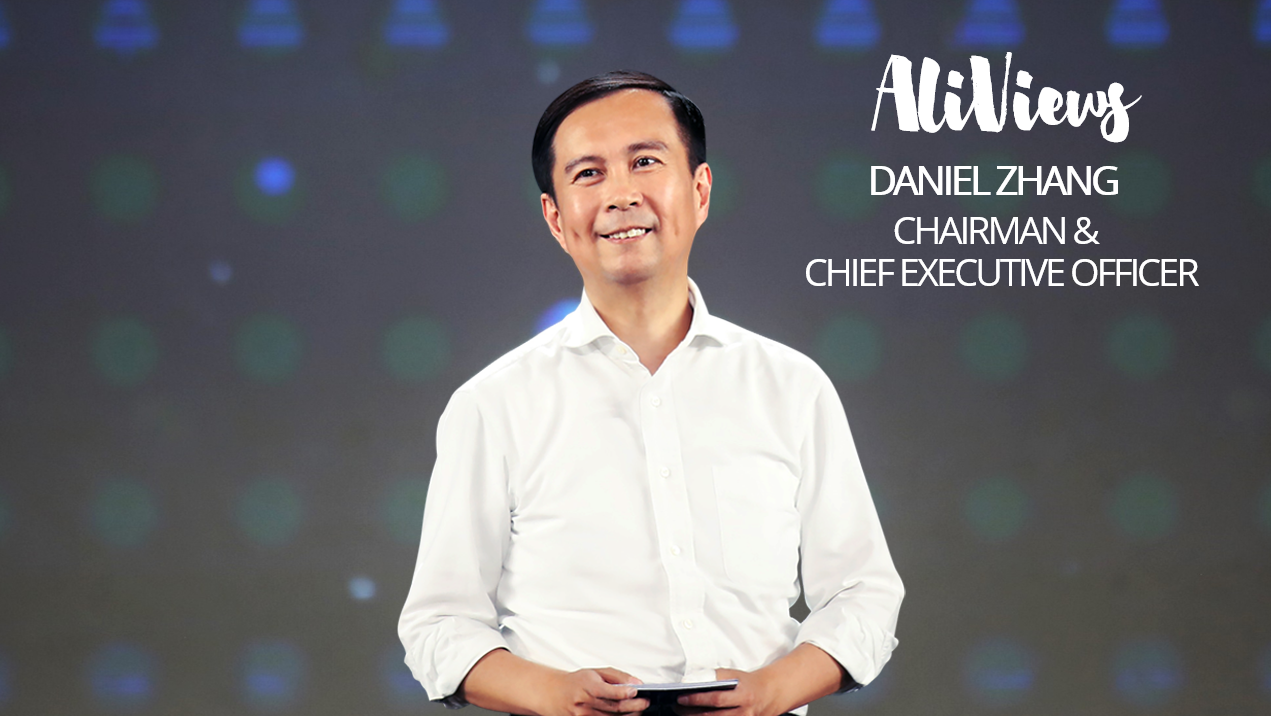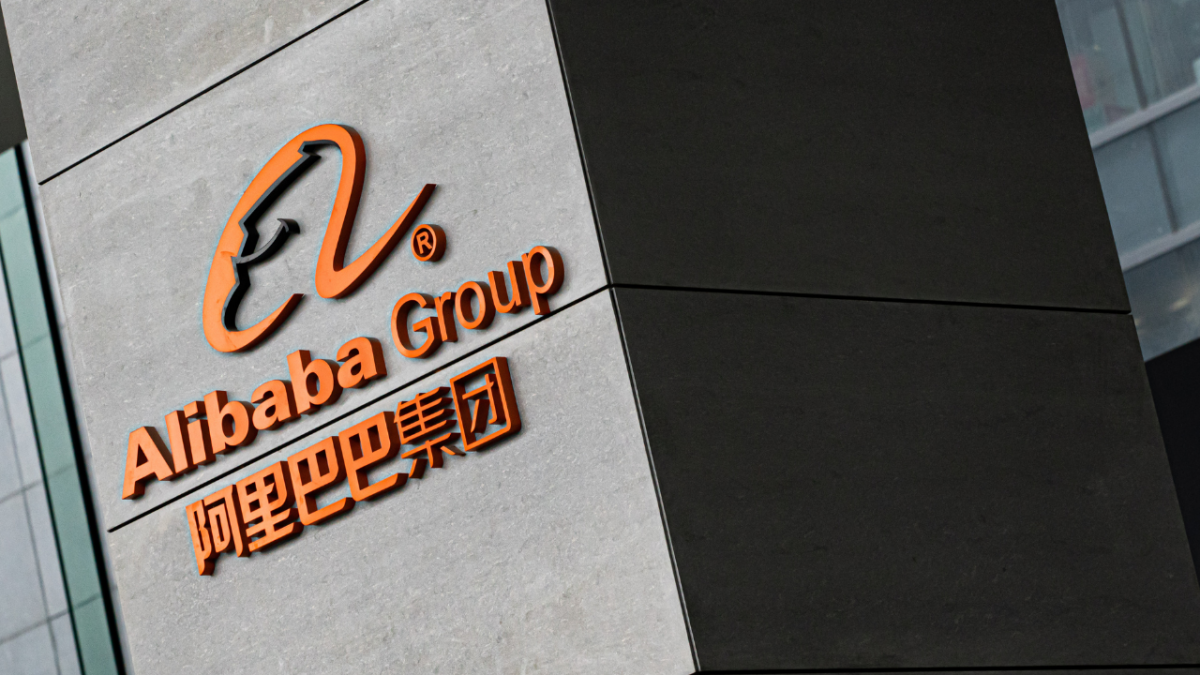


Photo credit: Alibaba Group
Alibaba Group on Thursday reported earnings for the quarter ending Dec. 31. Shortly after, Alibaba Chairman and CEO Daniel Zhang addressed investors on a conference call. Below are his comments:
Hello everyone. Thank you for joining our earnings call today.
This quarter, Alibaba Group’s businesses continued to make steady progress. We remain focused on building long-term capabilities centered around customer value creation despite the resurgence of Covid, China’s macroeconomy slowdown and increasing competition.
In the fourth quarter of 2021, China’s GDP grew 4% while total retail sales rose 3% year-over-year. Both decelerated from the previous quarter due to the confluence of Covid, price increase of raw materials and other factors.
At the same time, the overall trend of digitalization across both consumption and industrial sectors became increasingly apparent and accelerated. Large internet companies in China have entered commerce through various ways, and digital consumption formats and user experiences have become increasingly diversified.
Against this backdrop, we believe our most important proposition and biggest opportunity for healthy and sustainable long-term growth are 1) the ability to continually create new consumption demand and offer innovative consumer experiences and 2) support the industrial digitalization of our customers.
With 1 billion high-quality AACs, we believe we have substantively captured all consumers with purchasing power in China. Our focus will shift from new user acquisition to user retention and ARPU growth
As of quarter-end, our annual active consumers reached 1.28 billion globally, representing quarterly net adds of 43 million. In China, our AACs grew from 953 million to 979 million during the quarter while AACs outside of China grew from 285 million to 301 million.
We are fully on track to deliver the target of 1 billion China AACs by the end of this fiscal year, and Taobao Deals has been the major contributor to our new user acquisition.
With 1 billion high-quality AACs, we believe we have substantively captured all consumers with purchasing power in China. Our focus will shift from new user acquisition to user retention and ARPU growth.
Despite the impacts from slowing retail sales and intensifying competition on our China Commerce business, the next-year retention rate of new AACs acquired in calendar year 2020 was 86% in 2021. This AAC retention rate held steady against our historical patterns, indicating healthy user stickiness on our platforms.
Our overall ARPU, or the average annual spend per AAC, decreased by a low-single-digit percentage year-over-year in 2021 due to increased contribution of new users from less developed areas. But I want to highlight that ARPU of the AACs with over RMB10,000 annual spend on our platform continued to increase year-over-year.
Looking ahead, we aim to further strengthen user engagement and time spent through a greater variety of consumption use case offerings.
We want to enhance our influence on the consumer-decision making journey, and tailor it to reflect the unique considerations of each product category.
We will shift our focus from expanding the total number of AACs in China to driving deeper AAC penetration across product categories. This will ultimately help us capture a more significant consumer wallet share.
Narrowing Losses
Over the past year, we invested heavily in Taobao Deals and Taocaicai. We do not view these two businesses as standalone units, but integral parts of our China Commerce business matrix. The unique value contributions of these two new businesses gradually became clear following several quarters of development.
Taobao Deals has been a powerhouse in new user acquisition for China Commerce, attracting 280 million AACs with a quarterly net add of 39 million. Paid orders during the quarter grew over 100% year-over-year. Taobao Deals and Taobao app have highly complementary user base, with a higher proportion of price-sensitive consumers on Taobao Deals.
There are many ways for us to realize the commercial value of these users. One example is improving supply chain efficiency by connecting manufacturers directly with consumers.
As for Taocaicai, it has been a successful use case extension into the grocery and fresh produce category for price-sensitive consumers. More than 50% of Taocaicai’s AACs were first-time fresh produce buyers on our platforms.
Now that Taobao Deals and Taocaicai have established market presence, we will shift our focus towards quality growth. Through optimizing efficiency, we expect to gradually narrow the operating losses in these two businesses in the next few quarters.
We believe the future development of international commerce markets will be based on the combination of local supply and cross-border supply
Home & Away
In Local Consumer Services, the combined AACs of our “to home” and “to destination” businesses have reached 372 million, reflecting a quarterly net add of 17 million. Total order volume grew 22% year-over-year.
On the “to home” side, we made meaningful progress in improving unit economics for Ele.me through a city strategy with more disciplined user acquisition spending and improved delivery cost.
On the “to destination” side, Amap reached a record high of over 200 million DAUs during the National Day holidays in China while transacting users continued to grow during the quarter. We believe the picture of Amap transforming from a map navigation tool to a lifestyle services platform centered around destinations is becoming more and more clear.
For our International Commerce businesses, AACs reached 301 million by December with a quarterly net add of 16 million. Overall order growth continued to maintain healthy momentum at 25% year-over-year, with Lazada and Trendyol growing 52% and 49% respectively. AliExpress was negatively impacted by changes in European Union’s VAT exemptions.
We believe the future development of international commerce markets will be based on the combination of local supply and cross-border supply. Our long-term focus is a balance of both – to fully leverage China’s advantages in cross-border supply while organizing local supply effectively.
Meanwhile, logistics network development is a priority in our globalization strategy, as logistics is the fundamental infrastructure supporting a high-quality consumer experience based on integrated product supply from cross-border and locally.
Cainiao has been developing logistics network in Southeast Asia and Europe leveraging the commerce use cases presented by Lazada, AliExpress and Trendyol. We will continue to invest in Cainiao’s global logistics network as a cornerstone of our globalization strategy.
Trillion RMB Opportunity
Additionally, global coverage and capacity in cloud is another essential piece supporting our globalization strategy. This quarter, AliCloud continued to invest in expanding its international infrastructure. We added two data centers in the Asia Pacific, one in Korea and one in Thailand. AliCloud now provides cloud computing services in 25 regions globally.
Our cloud revenue grew 20% year-over-year this quarter. We saw very strong growth in demand from financial services and telecom sectors, which partially offset slowing demand from some customers in the internet sector.
China’s cloud market will be a trillion RMB opportunity by 2025 and industrial digitalization today is still in the very early stage. Alibaba Cloud is committed to serving the real economy for the long term and the digitalization of all industries.
Recently, we helped the International Olympics Committee migrate 100% of their core systems onto Alibaba Cloud during the Beijing Winter Olympics.
This is the first time in the history of the Olympic Games that cloud computing has replaced traditional IT infrastructure to support the planning and operations of the Games. In the past, each Olympic host city would have to build extensive IT infrastructure and dismantle it after the end of the Games.
By replacing the physical infrastructure with cloud-based services, hardware costs will be significantly reduced while application development and deployment will be much more efficient.
We see similar opportunities and advantages for digitalization in many industries in the future, such as new energy vehicles, financial services and healthcare. These industries have high potential with massive demand for cloud computing and digital intelligence. We will leverage Alibaba Cloud’s proprietary technology and products to deliver tailored industry solutions.
ESG Action Plan
As China continues to advance towards its carbon peak and neutrality goals, we foresee increasing demand for more reliable and sustainable technology infrastructure as digital transformation deepens across industries.
We aim to leverage Alibaba Cloud’s product and technology innovations to help our customers find greater energy efficiency. For example, our data centers equipped with liquid-cooling technology achieved industry-leading energy efficiency level with a PUE [Power Usage Effectiveness] of as low as 1.09. Moreover, our facilities can deliver high performance with lower power consumption leveraging our proprietary products and technologies.
During our Investor Day this past December, we announced Alibaba’s carbon neutrality pledge.
By 2030, we committed to achieving Scope 1, 2 and 3 carbon neutrality for Alibaba Cloud; Scope 1 and 2 carbon neutrality in the operations of Alibaba Group and reducing Scope 3 carbon intensity by half. Additionally, we introduced the concept of “Scope 3+” to facilitate 1.5 gigatons of decarbonization across Alibaba’s ecosystem participants by 2035.
Since Q4 last year, China’s regulators have issued multiple important statements about the digital economy. They emphasized the need to strengthen China’s digital economy, improve its quality and grow its scale.
They also promote healthy and sustainable development of the platform economy based on robust platform governance. These principles are highly consistent with Alibaba’s own business philosophy and commitment to social responsibility.
Looking ahead, we remain focused on healthy and sustainable development by serving our customers, especially SMEs, supporting the digital transformation of industries, serving the real economy, and supporting our communities.
Thank you everyone for your time.
To learn more about Alibaba’s sustainability efforts click here





